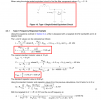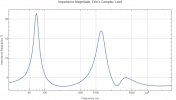So we are down to BOM breakdown to defend the thing..

Where are your source of cost information for the different parts? Do you know the markup on the different parts of the amp?
If not, this way of reasoning is nonsense.
Let's try to keep this polite discussion just a little less strident.
Okay, firstly I agree that, unless we were to do a complete strip down, assessing the cost of each individual component, we're never going to be 100% spot on. But let's not make the perfect the enemy of the good. We really shouldn't be just saying
"We can't know to the penny how much the streamer-DAC stage cost, so we're just going to compare this to other £300 amps".
It is more than reasonable to point out that this isn't just an amp, it has a streaming-DAC stage, so we can't compare this to other amps of a similar price which have no streaming-DAC stage. That would be poor reasoning.
Okay, we don't know everything. But what do we know?
Okay, firstly we can compare the Mini, Pro and Pro Plus.
Mini = basic DAC (TI PCM 5121), and limited processing power (Dualcore A7 CPU, 128MB DRAM, 128MB Flash).
Pro = basic DAC (TI PCM 5121), and better processing power (Quadcore A53 CPU, 128MB DRAM, 128MB Flash).
Pro Plus = better DAC (AKM 4493SEQ), and better processing power (Quadcore A53 CPU, 128MB DRAM, 128MB Flash).
So how does the Amp compare.
Well, we know the SNR of the TI PCM 5121 is 106 dB(both the chip manufacturer's specs, and WiiM's specs, though end performance may not be as good.
We know the claimed specs for the AKM is 125 dB (manufacturer) and 121 dB (WiiM's claim).
We know the ESS Sabre DAC's claimed manufacturer's spec is 130 dB.
Now, whether that's completely accurate or not, it's not unfair to say that this isn't a poor DAC, and probably better than the WiiM Mini and Pro, and possibly as good or better than the Pro Plus.
Processing? We know that the Amp almost certainly has better processing power than the Mini, and is in line with the Pro and Pro Plus. Why? Well, WiiM have been working on room correction and increasing the 4-band PEQ to 8-band on all three streamers. But they've now dropped this on the Mini's route map, whilst keeping it on the Pro, Pro Plus, and Amp. Indeed the routemap for all 3 higher-tier WiiM products is near-identical.
So we can safely say that the DAC-streamer stage of the Amp is definitely better than the Mini, definitely better than the Pro, and possibly as good, if not better, than the Pro Plus. At the very worst, it sits between the Pro and Pro Plus.
What else? We know the Amp has a very nice, and not inexpensive, aluminium body, whilst the Mini, Pro, and Pro Plus are plastic, so that's going to eat into the cost.
Now if the DAC-streamer stage of the Amp PLUS the cost of the aluminium case, are as much as the Pro Plus, that leaves £80 for the amplification stage.
Okay, where would that put in the market? Well, the WiiM Amp uses a TI TPA 3255 amp chip. Just like the Fosi Audio V3.
The WiiM Amp was measured here by Amir as having SINAD of c.88 dB The V3 was also measured at 88 dB.
The Wiim Amp was measured here by Amir as having an SNR of 93 dB at 5W. The Fosi was 91 dB.
At full power, Wiim Amp 105 dB, V3 103 dB.
If you take the WiiM Amp's price of £300 and deduct £220 for everything before the amplification stage, that leaves £80.
The V3 costs £80.
Now this isn't absolute proof, I agree. But it's a hell of a good ballpark indicator of the standard of the amplification we can reasonably expect from the WiiM Amp.
Given all of the above, comparing the Wiim to the Fosi, I'd say they both walk like Chuck Berry playing guitar, say "Quack!" and go well with a Morello Cherry Sauce.
And I think everything I've said here is 'reasonable',






